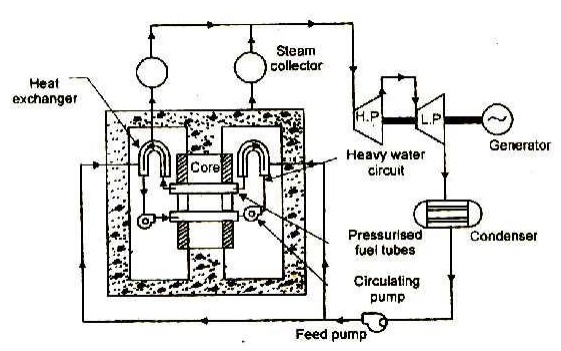Construction and working principle of Heavy Water Cooled Reactor (HWR) (or) CANDU Type Reactor (CANDU –Canadium, Deutrium, Uranium).
These reactors are more economically to those nations which do not produce enriched uranium as the enrichment of uranium is very costly. In this type of reactors, the natural uranium (0.7% U235) is used as fuel and heavy water as moderator.
This type of reactor was first designed and developed in Canada. The first heavy water reactor in Canada using heavy water as coolant and moderator of 200 MW capacity with 29.1% thermal efficiency was established at Douglas (Ontario known as Douglas power station. The arrangement of the different components of CANDU type reactor is shown in figure.

Figure: Douglas-point candu type heavy water moderated and cooled nuclear reactor power plant
The coolant heavy water is passed through the fuel pressure tubes and heat-exchanger. The heavy water is circulated in the primary circuit in the same way as with a PWR and the steam is raised in the secondary circuit transferring the heat in the heat exchanger to the ordinary water.
The control of the reactor is achieved by varying the moderator level in the reactor and, therefore, control rods are not required. For rapid shutdown purpose, the moderator can be dumped through a very large area into a tank provided below the reactor.

